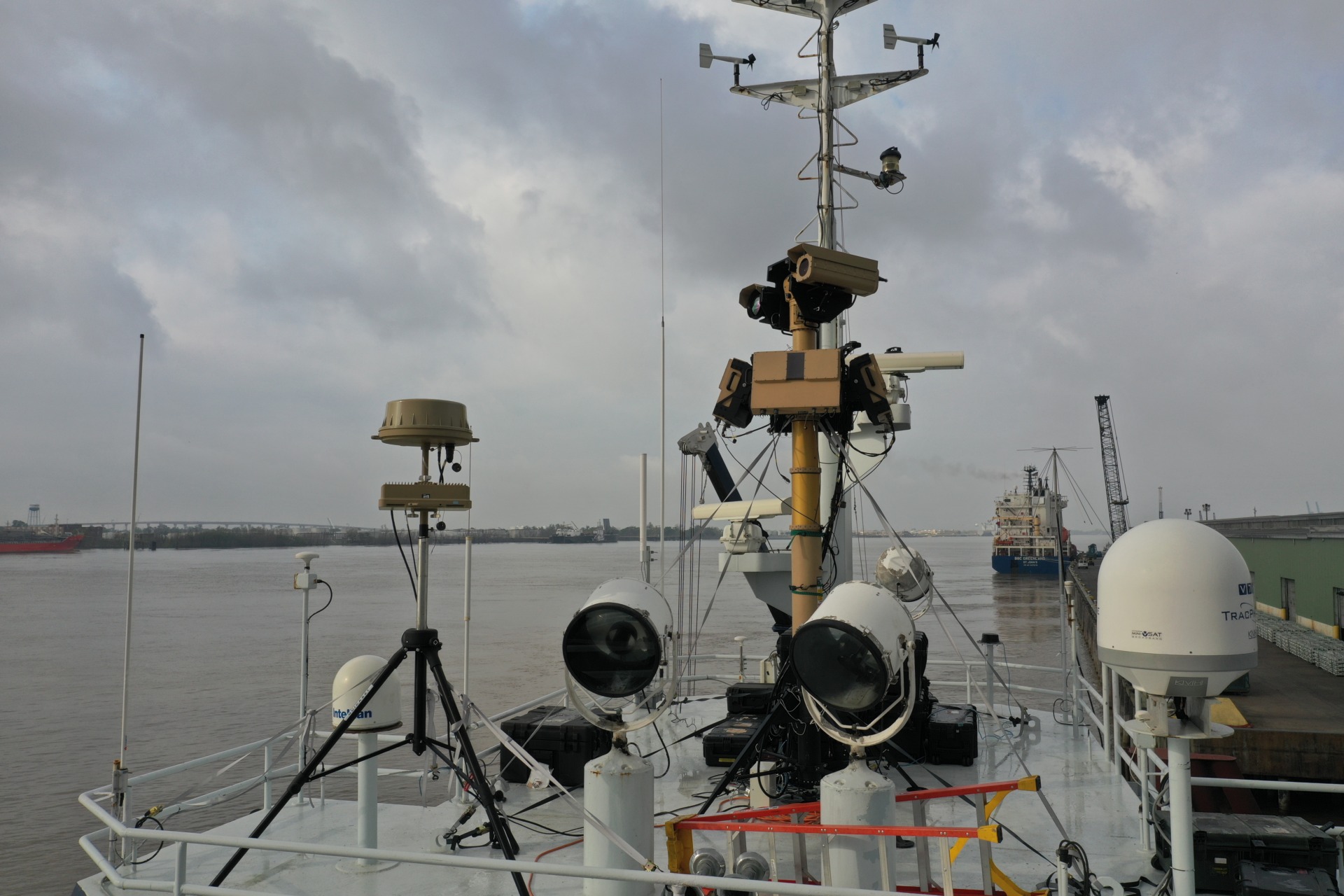

Port operations are crucial for global trade, with ports serving as gateways for billions of dollars’ worth of cargo. However, the increase in unauthorized drone activities poses significant security threats, raising concerns about the safety of vessels, crews, and critical infrastructure. To address these challenges, a recent maritime capability demonstration took place at the Lower Mississippi River Complex in Louisiana, showcasing the power of multi-layered defense against rogue drones. This blog post highlights the significance of this demonstration and the benefits of deploying a comprehensive counter-drone solution.
Ensuring maritime safety and security is paramount, especially in busy ports such as the Lower Mississippi River Complex in Louisiana. With approximately 700 million dollars’ worth of cargo passing through this region daily, protecting one of the country’s major supply arteries is crucial. Recently there has been an increase in reports of unmanned aerial systems (UASs) used in restricted airspace, near critical infrastructure such as oil & gas pipelines and even unreported ship to shore deliveries. To address this issue, and practice and simulate scenarios for the mitigation of potential risks associated with rogue UASs, a multi-layered maritime domain awareness and critical infrastructure port security capability demonstration was conducted in March 2023.
Federal, state and local authorities, in collaboration with industry leaders and law enforcement agencies, have been actively monitoring UAS activity at major ports, and developing strategies to detect and prevent illegal activities. A recent ship-based demonstration showcased the integration of advanced solutions to enhance maritime domain awareness and provide protection for ports and critical infrastructure.
The demonstration brought together several key stakeholder service and solution providers, including D-Fend Solutions, Liteye Systems, Numerica Corporation and Romeo Papa Boats. The goal of the demonstration was to show the effectiveness of deploying an integrated multi-layer ship-based C-UAS system to patrol and protect our nation’s vital supply routes and ports.
The increase in drones has brought forth a complex security concerns in virtually every domain. We have even seen how unmanned surface vessels (USV) are utilized in Ukraine to attack Russian ships at port or close to shore. Drones can and do pose a significant risk to ports, ships departing and arriving from coastal waters and coastal infrastructure. Additionally, foreign commercial vessels operating in US territorial waters could deploy a UAS to conduct smuggling and espionage or surveillance operations.
The mission of the maritime capability demonstration was to showcase anti-drone maritime capabilities and the integration of advanced multi-layered solutions for complete maritime domain awareness to enhance security for ports and key infrastructure. The technologies deployed included:
D-Fend Solutions EnforceAir: EnforceAir integrates smoothly as a key component of a Multilayered Maritime Domain Awareness Concept. Designed to deploy in virtually any environment, EnforceAir offers automatic and passive RF based UAS detection. EnforceAir can neutralize threats through RF cyber-takeover technology, without jamming or causing collateral damage, making it highly effective for counter-drone control in sensitive environments.
Liteye Systems SX800 Camera: Integrated with the system, this camera provides real-time visual identification of drones and their operators, enhancing situational awareness.
Numerica Corporation’s Spyglass Radar: The radar system aids in detecting and locating drones in the airspace, complementing EnforceAir’s capabilities.
All these sensors were installed on top of a Mid-Sized Multi-Purpose Vessel that was provided by Romeo Papa Boats, operators of a diverse, multi-purpose fleet of crewed and uncrewed vessels.

default
During the weeklong use case, EnforceAir showcased its effectiveness by detecting over a dozen real-world UASs, including drones spotted flying near security vessels and installations in New Orleans. With seamless integration of Liteye’s camera, Numerica’s radar, and EnforceAir’s technology, the system demonstrated the ability to identify threats and obtain real-time visuals on the drone and pilot, ensuring effective Maritime Domain Awareness.
The benefits of employing this multi-layered counter-drone defense for maritime challenges are manifold. The integrated systems, which are suitable for deployment on both small and large platforms, protect crew, passengers, vessels, cargo, ports, harbors, routes and key infrastructure. EnforceAir’s non-jamming and non-kinetic approach maintains critical safety and operational capabilities without causing communication interference or collateral damage. Its 360-degree coverage, ruggedized design, and proven track record make it an ideal choice for integrating within a multi-layered system.
Maritime security is a pressing concern in bustling port complexes worldwide. As drones proliferate, embracing multi-layered Counter-UAS solutions supports the mitigation of emerging threats and the safeguarding of trade routes and economic interests.